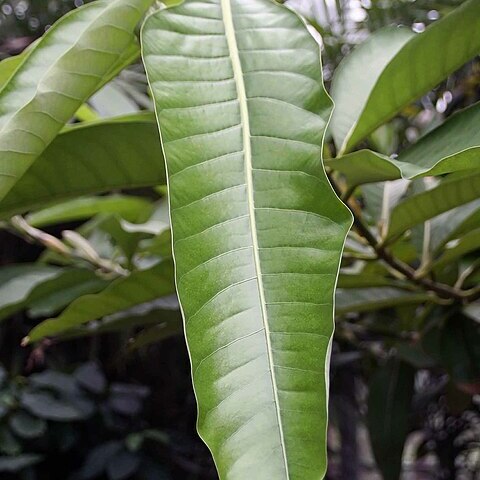A tree. It grows 10 m high. It keeps its leaves throughout the year. The branches are stout. The leaves are alternate. The leaf stalk is stout and 1.5-2.5 cm long. The leaf blade is oval and 25-40 cm long by 6-15 cm wide. There are 16-20 pairs of side veins. There are a net like pattern of veins. The flowers are in groups in the axils of leaves. The fruit are round and 2.2-3 cm across. They are red-orange at maturity. The flesh is creamy white.


